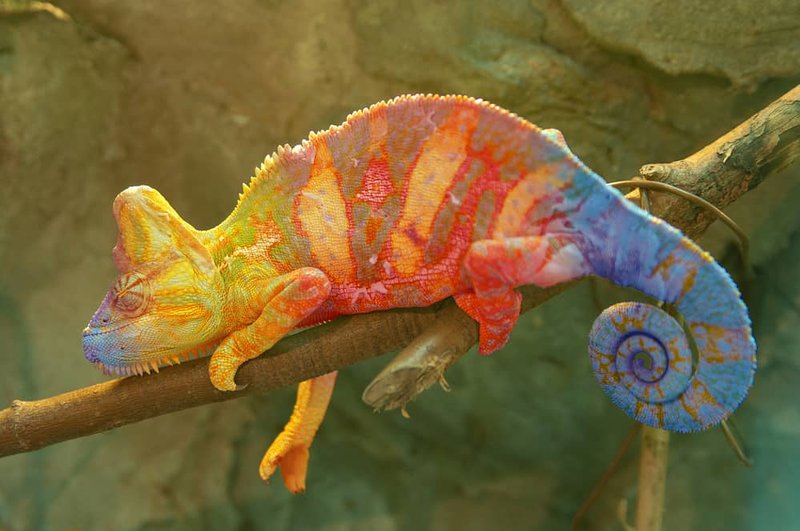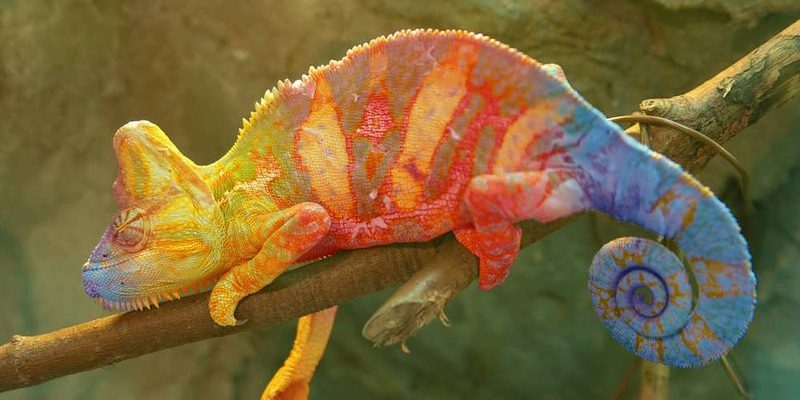
The *Veiled Chameleon* is a popular pet known for its vibrant colors and quirky personality. They come with a distinctive crest on their heads, making them quite the showstoppers. But as majestic as they are, many enthusiasts wonder if they share the same remarkable regenerative abilities as some other reptiles, like certain types of lizards. So, can these colorful creatures truly grow back missing tails or limbs? Let’s explore!
Understanding Chameleon Anatomy
Before we get into the nitty-gritty of tail and limb regeneration, it’s important to understand a bit about chameleon anatomy. Chameleons, specifically the Veiled Chameleon, have a unique physical structure that’s adapted for their lifestyle. Their bodies are designed for climbing and catching prey, with specialized toes and a long tail that helps them balance on branches.
The tail of a chameleon is particularly interesting. It’s not just for show; it acts like an extra hand when navigating through trees. When threatened, chameleons can lose their tails as a defense mechanism. This ability is common in many reptiles and is known as autotomy. However, this doesn’t mean they can regrow them. Unlike some species of lizards, which can regenerate tails, chameleons don’t have this capability—the tail that’s lost is gone for good.
Can Veiled Chameleons Regrow Their Limbs?
You might be wondering about limbs now. Just like their tails, Veiled Chameleons cannot regrow their limbs either. When a limb is lost due to an injury or a predator, this talented reptile won’t be able to grow it back. Many creatures in the animal kingdom have the ability to regenerate, but chameleons are not among them.
This inability to regenerate means it’s essential to provide a safe environment for your chameleon. When caring for one, you want to ensure that their habitat is free from hazards that could lead to injuries. Chameleons are delicate creatures, and a small mistake can have big consequences.
Why Can’t Chameleons Regrow Their Body Parts?
Now, let’s dive into the science of why chameleons don’t share the regenerative abilities of some other reptiles. Regeneration is a complex biological process. It involves specialized cells that can develop into different types of tissues. For many species, this is a built-in survival mechanism. However, chameleons haven’t evolved this ability.
Instead, chameleons have developed other survival strategies. Their camouflage abilities allow them to hide from predators effectively. When cornered, they can also escape quickly by darting into the foliage. This method of survival has worked well for them over millions of years, so they haven’t needed to evolve regeneration.
The Importance of a Safe Environment
Since Veiled Chameleons can’t regrow their limbs or tails, it’s crucial to create a safe living space for them. Here are some tips for keeping your chameleon safe and sound:
- Secure enclosure: Use a sturdy, escape-proof terrarium to prevent accidents.
- Natural habitat: Provide plenty of branches, plants, and climbing options to mimic their natural environment.
- Safe decor: Avoid sharp objects or decorations that could injure them.
- Supervise interactions: If you allow children or other pets around, supervise to prevent any rough handling.
By prioritizing safety, you’re helping to ensure that your chameleon lives a long and healthy life.
What to Do If an Injury Occurs
In the unfortunate event your chameleon gets injured, it’s essential to act quickly. First, assess the injury. If it’s minor, providing a clean and stress-free environment can help. However, if the injury looks severe, like a lost limb or tail, you should seek veterinary care immediately.
Here are some steps to take if your chameleon is injured:
- Keep them calm: Minimize stress by reducing noise and avoiding excessive handling.
- Check for bleeding: If there’s bleeding, apply a clean cloth gently to stop it.
- Consult a vet: Take your chameleon to a vet who specializes in reptiles for professional care.
Proper care after an injury is vital since stress can lead to further health issues, including infections.
Final Thoughts on Chameleon Regeneration
So, in summary, *Veiled Chameleons* are fascinating creatures, but they lack the ability to regrow their tails or limbs. While they are equipped with other survival mechanisms, like incredible camouflage and quick escape tactics, their anatomy doesn’t allow for regeneration. Knowing this helps you appreciate their unique qualities even more.
If you’re considering bringing a chameleon into your home, understanding their needs and potential risks is crucial. With a little love and attention, you can provide a safe and enriching environment for these vibrant little reptiles. And remember, while they can’t regrow what they lose, the joy they bring to your life is absolutely priceless!

